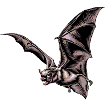Museum, University of Nebraska State

University of Nebraska State Museum: Mammalogy Papers
Document Type
Article
Date of this Version
2011
Citation
Acta Palaeontol. Pol. (2011) 56(2): 225–246. doi: 10.4202/app.2010.0005
Abstract
The body masses of sixteen species of amphicyonids (Mammalia, Carnivora, Amphicyonidae) from the New and Old World were estimated on the basis of 86 osteological variables measured from the craniodental (N = 44) and postcranial (N = 42) skeleton of living species of Canidae and Ursidae. Given the absence of complete and well preserved skeletons of amphicyonids in the fossil record, multiple regression functions were derived separately from measurements taken from the mandible, the cranium and the major limb bones. The accuracy of the regression functions was evaluated using the percentage prediction error and the percentage standard error of the estimates. Mass values were calculated with these equations using measurements taken in adult individuals from a number of daphoenine and amphicyonine species. Results obtained show that three distinct size classes of amphicyonids emerged through the evolutionary history of the “beardog” family and that these size classes correlate with presumably different ecomorphs. Quantitative estimates of body size of amphicyonids are critical for deciphering the paleobiology of this poorly understood family of large fissiped carnivorans and can be used for placing it within a broader ecological context.

